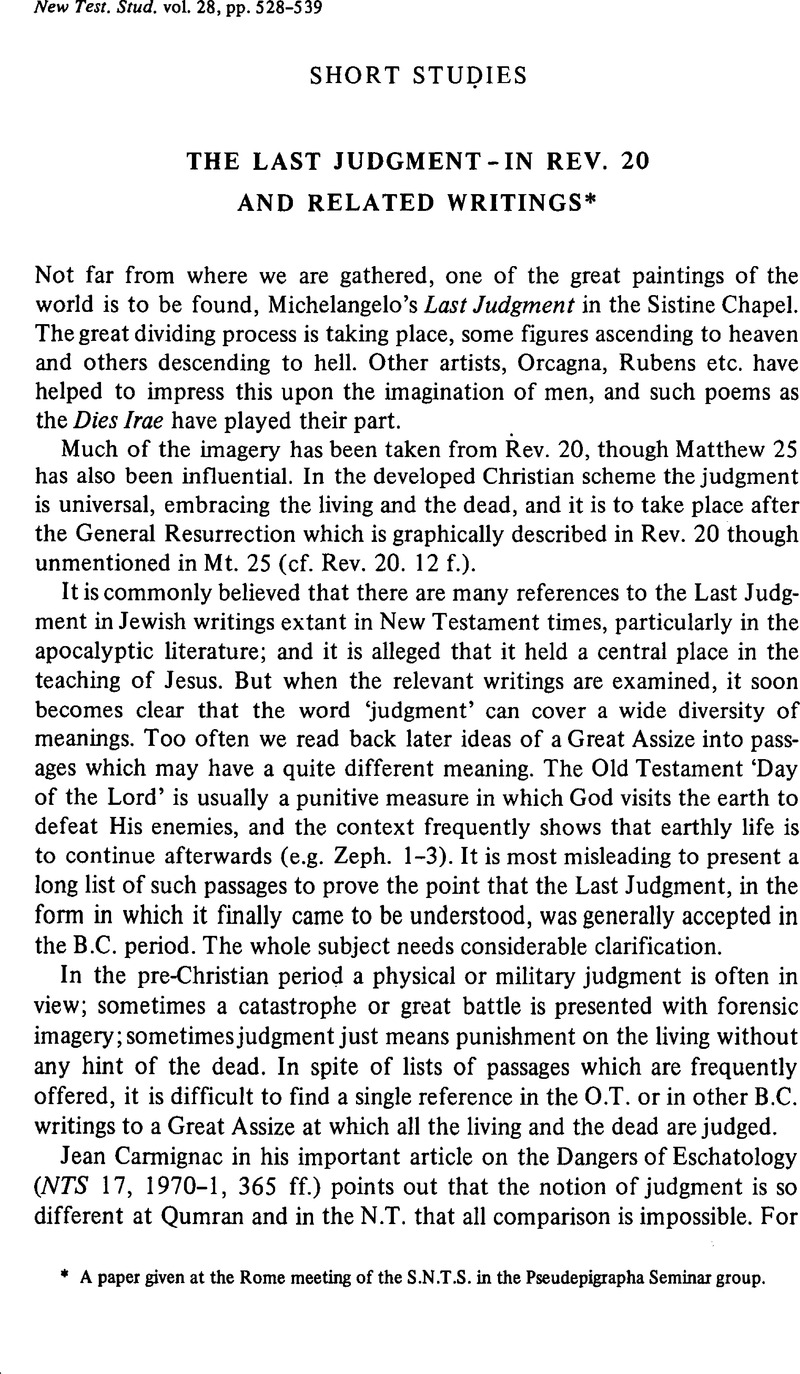Published online by Cambridge University Press: 05 February 2009

[1] Cf. Messel, N., Die Einheitlichkeit der jüdischen Eschatologie (Giessen, 1915), pp. 180 ffGoogle Scholar. and Moore, G. F., Judaism 2, p. 332.Google Scholar
[2] Here and elsewhere actual quotations are purposely given instead of mere references.
[3] Cf. Thomas Aquinas' attempt to deal with the objection that ‘what is certain is not submitted to judgment’. (Summa, III, suppl. Qu. 89.)
[4] Colossians and Philemon (1897), pp. 96 f.Google Scholar
[5] Quotations are generally taken from Dr Knibb's, M. A. translation The Ethiopic Book of Enoch (1978) by kind permission of the publishers (Oxford University Press).Google Scholar
[6] See NTS 23 (1976–1977), pp. 82–90.Google Scholar
[7] The Akhmin Greek omits the reference to the righteous in v. 7; its presence in the Ethiopic is probably due to dittography, the righteous being mentioned at the beginning of v. 8.
[8] An interpretation of this kind is advocated by Lods, A., Comptes rendus de l'Academie des Inscriptions et Belles Lettres (1943), pp. 434–53Google Scholar; cf. the discussion in Garnet, Paul, Salvation and Atonement in the Qumran Scrolls (Tübingen, 1977), pp. 74 f.Google Scholar, where En. 22. 13 is rendered: ‘…sinners, the punishment for whose transgression was complete’. Cf. also my Greek Influence in Jewish Eschatology, pp. 14–19.
[9] 90. 33 contains the only reference to a resurrection in the Dream Visions and even this verse could be otherwise interpreted.
[10] References to judgment in 98. 10; 99. 15; 100. 4 clearly apply to sinners. For a discussion of the eschatology of this section see Aalen, S., ‘St Luke's Gospel and the Last Chapters of 1 Enoch’ (NTS 13 (1966–1967), pp. 1–13).CrossRefGoogle Scholar
[11] The Eschatology of the Book of Jubilees (Leiden, 1971).Google Scholar
[12] Eusebius and others contend that the doctrine of judgment is found among the pagans; they refer to Greek witnesses but fail to note that these do not include any final assize. See e.g. Eusebius, Praeparatio Evangelica, XI, ch. 38.
[13] Cf. the prayer of Pascal: ‘O God, before whom I shall be obliged to give an exact account of my actions at the end of my life, and the end of the world…’
[14] For a discussion of these difficulties see my book His Appearing and His Kingdom: the Christian Hope in the light of its History (London, 1953), chs. 7 to 10.Google Scholar
[15] Sermon on The Great Assize (Rom. 14. 10); Bedford Assizes Mar. 1758.
[16] City of God 20. 14.
[17] Summa, III, suppl., Qu. 88, Art. 2.
[18] Quistorp, Cf. H., Calvin's Doctrine of the Last Things (tr. H. Knight, 1955), pp. 123 fGoogle Scholar. as quoted in Milton and the Christian Tradition by Patrides, C. A. (Oxford, 1966).Google Scholar